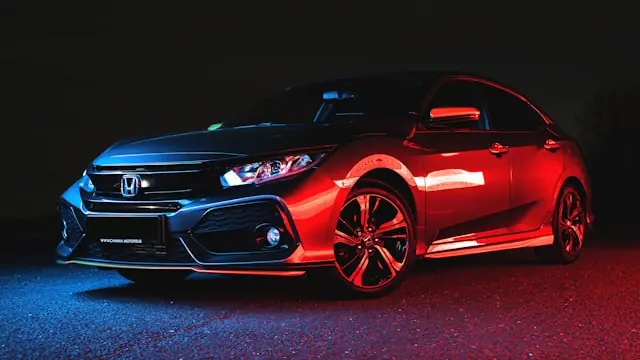New-style number plates, introduced in the UK in 2001, are a staple of modern vehicle registration. Their structured format enhances clarity and security, while efficiently providing a vast array of unique combinations. This system, combining regional identifiers with age indicators and random letters, not only streamlines identification but also integrates seamlessly with technological advancements in road safety and law enforcement. As a testament to thoughtful design and forward planning, new-style number plates epitomise the intersection of functionality and innovation in automotive administration.
New-style, or current-style plates, however, still provide rich pickings to shrewd registration hunters.
A current-style number plate may not always stand out as much as a prefix, suffix or dateless number plate, but it's just as easily personalised. If you have a short name, a current style registration number will often be the most cost effective option for a personalised number plate. Your name can appear at the end of the registration, and can potentially feature a highly noticeable prefix, cleverly assembled within the registration's first four characters. With a new set of registrations released every six months, your dream plate is always only just around the corner.
Current-style number plates were introduced back in 2001, when the prefix system came to an end. The 2001 plate format is still in use to date, hence the common reference "current-style" or "new-style".
The current-style registration is split into three separate sections, each with its own purpose. The first two letters indicate where the vehicle was initially registered. The first of these two letters indicate a region & the second a DVLA local office. The two numbers in the middle of the registration indicate the age of the vehicle based on a 6 month period ranging from either March to August or September to February. A new age period is started on the 1st March and the 1st September every year. Whilst the current style system is still in place. Finally, the last three letters are completely random and give the vehicle its unique identity.
Because of the way the current style number plate system is structured, all current registration numbers consist of exactly seven characters, something that was not the case previously. With the dateless, prefix and suffix system, numbers would range from two characters up to seven. As well as the above mentioned character restriction on current style number plates, additional rules were also brought into place such as a new mandatory font that was to be universal across all current registration numbers. As well as this there was also new rules against bolts however national flags are now approved on current number plates.
Below, you'll find a breakdown of the year identifiers for current style number plates:
- 2001/02 - "51"
- 2002/03 - "02" and "52"
- 2003/04 - "03" and "53"
- 2004/05 - "04" and "54"
- 2005/06 - "05" and "55"
- 2006/07 - "06" and "56"
- 2007/08 - "07" and "57"
- 2008/09 - "08" and "58"
- 2009/10 - "09" and "59"
- 2010/11 - "10" and "60"
- 2011/12 - "11" and "61"
- 2012/13 - "12" and "62"
- 2013/14 - "13" and "63"
- 2014/15 - "14" and "64"
- 2015/16 - "15" and "65"
- 2016/17 - "16" and "66"
- 2017/18 - "17" and "67"
- 2018/19 - "18" and "68"
- 2019/20 - "19" and "69"
- 2020/21 - "20" and "70"
- 2021/22 - "21" and "71"
- 2022/23 - "22" and "72"
- 2023/24 - "23" and "73"
- 2024/25 - "24" and "74"
One major difference between the current plate format and previous systems, is the inclusion of both age and location identifiers in current-style registrations. This allows any observer with a little knowledge to easily tell when and where the registration was issued.
Additionally, because of the way the new style system was formatted, all number plates from 2001 onward would have exactly seven characters. Previous style of plate could comprise anything between two and seven characters.
In terms of precise format, new-style registration invariably start with two letters, which indicate where the reg was issued. This is then followed by two numbers which denote the year of issue. Finally this is followed by a sequence of three random letters which to allow for numerous combinations to be created for each location and year.
New Style number plates also broke the tradition of using an annual age signifier, and instead split each year into two separate portions - each with its own numerical ID. For example, an 02 plate was issued in March 2002, to run as far as September that year. From September 2002, a 52 reference replaced 02, and covered the remaining period up until the end of February 2003. 03 plates then replaced 52 for the next six months.
The above system is still in operation, and it will be for some time to come, as the format was conceptualised to continue for almost half a century.





